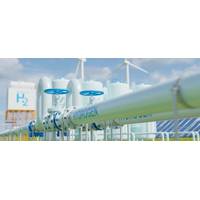California Gas Well Leak Fix Draws Closer
A calamitous natural gas leak near Los Angeles is inching closer to finally being plugged after months of trial and error with different techniques aimed at sealing a foul-smelling hole that has forced thousands of residents from their homes.
Southern California Gas Co, a unit of Sempra Energy, this week said it will start drilling a second relief well on Monday.
A second well, experts said, would offer a backup on the off chance that what is widely considered the company's fail-safe option - a relief well that is now less than 200 feet from intercepting the bottom of the leaky well - runs into trouble.
SoCalGas expects work on the first relief well to last through late February as it snakes bit by bit to a target the size of a dinner plate.
Crews can then pump fluids and cement through the new well to plug the leaky one thousands of feet beneath the breach that was found on Oct. 23 when residents complained of a rotten egg smell.
"It is a slow process once you get down to the fine tuning of lining up one well to the other," said Bill Abel, president of Abel Engineering in Houston, an expert in relief wells and well control.
He said crews drill, stop, survey, adjust as needed, then resume drilling "dozens of times," and each time takes a day or more. It is painstaking after the crews have drilled more than 8,400 feet - or 1.6 miles (2.5 km) - since starting on Dec. 4.
BP Plc used two relief wells in 2010 as it sought to kill its spewing Macondo well in the Gulf of Mexico. Its first relief well worked and it abandoned the second one.
As with the BP spill, SoCalGas initially tried other options. In mid-November, it began pumping salty water into the leaking well to smother the gas. But high pressure from below thwarted those efforts.
Safety concerns prompted the company to scrap another plan to capture leaking gas in a pipe and move it elsewhere to burn it.
Don Van Nieuwenhuise, director of the petroleum geoscience program at the University of Houston, said the relief well is the "fail-safe" alternative.
Gas has spewed from the well, which is connected to the second-largest U.S. natural gas reservoir, for more than three months.
(Reporting by Kristen Hays





